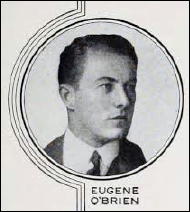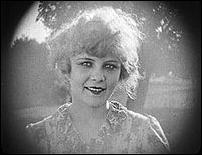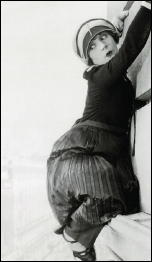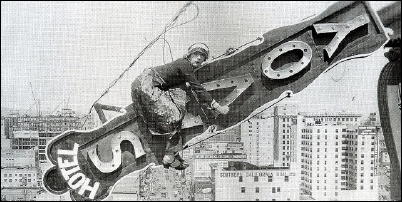Wed 1 Jul 2015
FILM ILLUSIONISTS РPart One: Georges M̩li̬s, by Walter Albert.
Posted by Steve under Movie stars & directors , Silent films1 Comment
by Walter Albert
One of the “givens” of film history is that French director Georges Méliès, a magician who turned his talents from stage to film enchantments, is one of the great film innovators. In my surveys of French films, I have always dutifully shown Méliès’ Trip to the Moon (1902) and talked glibly of the importance of his work.
I was only repeating standard film history, and I had no real basis for believing it until this past weekend when I attended an extraordinary event sponsored by the film section of Pittsburgh’s Carnegie Institute.
Méliès’ granddaughter, Madeleine Malthète-Méliès, came to Pittsburgh to present three different programs of his films with piano accompaniment by Eric Leguen. I was able to see thirty-one of the forty-seven films she screened, including four that were hand-tinted, and what I saw on those two rainy, chilly October evenings was a revelation.
In the dozen years from about 1898 to 1910 that Méliès was producing and directing, he made over five hundred short films. His family has been able to assemble and restore only about 150, so the series we were shown represents about one third of the surviving films.
Working before the era of the feature-length films that were to dominate world production after 1912, Méliès drew on his experience as a stage illusionist and his incomparable visual imagination.
Disguises and transformations abound in his films, and he devised the dissolve, fade, and superimposed image to make his fantastic tricks possible. The prints are not always properly defined, and some of them are not complete, but the witty inventions from his apparently inexhaustible box of illusions are still a delight.
What is particularly striking about Méliès’ films is their pacing, a perfectly choreographed comic rhythm that is most impressive when Méliès himself is performing.
For director-producer-writer Méliès was also a comic actor of rare skill, with a good-natured pleasure in fooling an audience that is still infectious after eighty years. He was very fond of playing the role of the Devil, and the final film of the series, Satan in Prison (1907), was a perfect capstone to the screenings.
In this dazzling film, the Devil-Méliès furnishes a bare cell out of his cape, complete to a lovely lady toasted at a candlelight midnight supper. When they are surprised by her jealous husband, she collapses into a heap of crumpled fabric in one of the most magical of Méliès’ effects.
Then, in a furious reverse movement, the Devil strips the room and, disappearing behind the cape, leaps toward the rear wall where the cape suddenly hangs suspended from two nails and, when it is pulled down, exposes a bare wall.
I mentioned to Madame Malthète-Méliès my pleasure in her grandfather’s good humour, and she replied — her entire face lighting up — that even after he had lost everything else, he never lost his humour and was always playing the prankster, pulling innumerable cigarettes out of her ear.
In his last years (he died in 1938) Méliès operated a toy shop in one of the Parisian train stations, but what find most painful is the anecdote of the evening that Méliès burned all of his negatives in the garden of his Montreuil home. Fortunately, prints have survived, but those wasted years when he was eclipsed by a generation of gifted comedians — all of whom drew upon his routines and inventions — is, I think, one of the great tragedies of film history.



